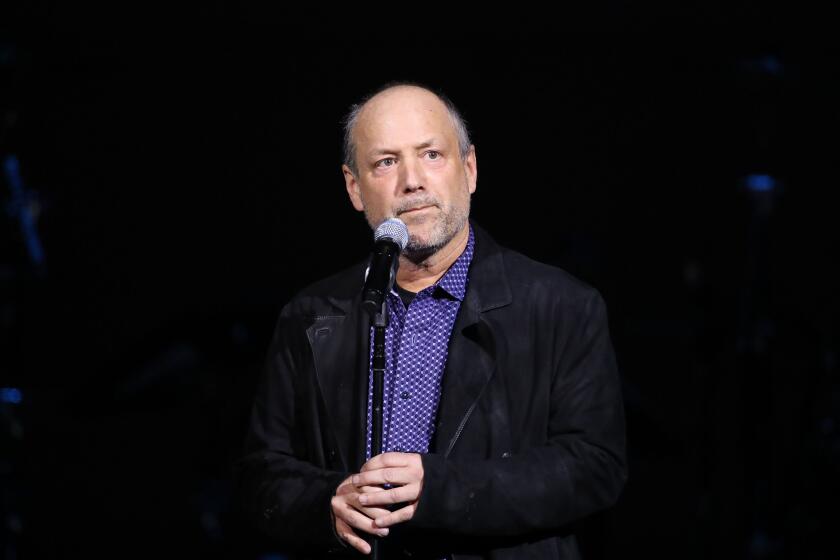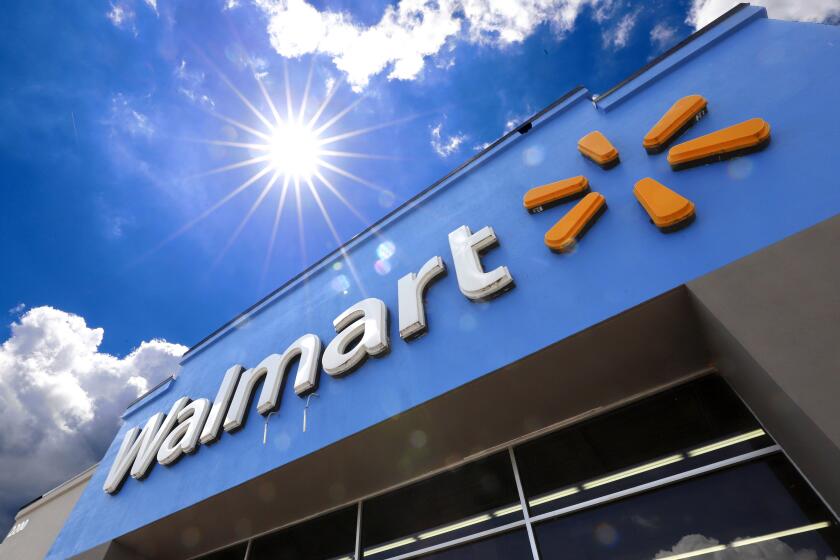What’s in store with bigger malls?
- Share via
Southern California’s shopping centers are in the midst of a major building boom that promises to change the mall experience but also raises new concerns about how the retail behemoths fit into their surrounding communities.
The latest addition is likely to be developer Rick Caruso’s 830,000-square-foot Shops at Santa Anita, which won unanimous approval from the Arcadia City Council last week. Caruso, considered Southern California’s mall innovator, built the faux village-style Grove mall in the Fairfax district -- which gets more visitors a year than Disneyland -- and is building a similar “lifestyle center” in downtown Glendale.
Equally important, Caruso has helped spur competing malls across Southern California to rethink what they do.
The region’s largest mall owner -- Westfield -- is spending $1 billion to expand and remake nearly a dozen retail centers, in some cases knocking down fortress-style buildings to replace them with more open shops, restaurants and theaters.
Westfield just finished a major expansion of its Topanga Canyon mall, has proposed a similar build-out of Fashion Square in Sherman Oaks, and plans to build hundreds of condos in its Century City mall. The company even plans to expand its shopping center next to Caruso’s Arcadia development.
Others are following suit. Developers took the roof off the Huntington Beach Mall and turned it into a Grove-style village, naming it Bella Terra. Owners of Santa Monica Place recently proposed a similar transformation.
Malls have struggled in recent years as anchor department stores have closed, but owners are looking for ways to maximize their sprawling grounds by adding stores not traditionally found at malls, as well as housing.
The new versions of the mall usually are less monolithic, more stylized outdoor centers that resemble self-contained villages and often face inward. Stuccoed buildings open onto central courtyards or walkways that are designed to take advantage of the mild Southern California climate and allow patrons to linger a little longer and spend a little more.
Critics roll their eyes at what they consider glorified Hollywood sets. But land-use planners say the village look speaks to shifting consumer tastes -- away from the sprawling, sterile suburban mall and into something with a more intimate, urban feel.
“The era of the cookie-cutter shopping center is ending,” said Michael Beyard, a senior resident fellow for retail and entertainment at the Urban Land Institute. “What were suburbs are really now urban.”
In many communities, however, the added development is raising alarms. Residents and local businesses spent years fighting Caruso’s plans in Glendale and Arcadia, worrying that the new shopping centers would cause more traffic gridlock and drive out mom-and-pop businesses.
Other mall expansions have faced similar opposition.
In downtown Glendale, Caruso’s Americana project -- a mix of housing and retail built around a “town square” -- is rising on Brand Boulevard amid smaller eateries and shops but also right next to the Glendale Galleria mall.
Glendale officials strongly backed Caruso’s project, eagerly anticipating the sales taxes it would generate. But there remains debate in the city over how huge shopping centers located back-to-back will affect already bad traffic as well as the scores of small businesses in downtown Glendale.
Anne Maria Tafoya, who lives in a downtown Los Angeles loft but comes to Glendale to shop, likes the concept of an outdoor mall but wonders whether Brand Boulevard can handle another huge development.
“I don’t know if the community can support much more shopping, especially if more traffic comes to the neighborhood,” said Tafoya, 39.
Community opposition has already derailed mall developer Macerich’s ambitious plans for the Santa Monica Place mall. Macerich wanted to tear down the aging indoor center and replace it with a sprawling complex of shops and eateries as well as high-rise condos, shops and offices.
But residents rose in protest, saying the development would be too dense and would ruin the low-rise ambience of the area.
Now the developer is back with a scaled-down plan that calls for stripping away the mall’s roof, creating public walkways, large gathering places and a third-floor dining deck with ocean views as well as play areas for children and public art space.
In Arcadia, residents backed by businesses that feared the competition of another mall fought Caruso, saying the city was placing sales tax revenue ahead of what was best for residents.
“This is the last large parcel of developable land in the San Gabriel Valley,” said Sung Tse, a spokesperson for Arcadia First, the group opposing the Shops at Santa Anita. “Why not look at an alternative? Why are there no other options than another mall?”
Tse said the shopping center would become a regional destination, used by more than just Arcadia residents. But she said her city, which already has one serviceable mall, would bear the brunt of the increased traffic and pollution.
Traffic also was a huge concern when Caruso’s Grove opened five years ago. The project included $5 million in traffic improvements paid for by Caruso. But last year, the city of Los Angeles tried to address the gridlock with $2.86 million more in street improvements.
The changes in the look and feel of shopping centers are part of a national, if not international, trend that is driving consumers outdoors and enhancing the shopping experience. Locally, operators are adding large indoor playgrounds for children and shattering the mold that once pegged a mall as either high- or low-end -- integrating, say, a Target and Neiman Marcus into the same center.
In South Africa, developers are adding sports complexes for local schools near food courts and drive-in movie theaters on parking lot roofs. In Japan and Israel, theaters are stitching the movie complex into the larger shopping culture, tracking consumers closely so giveaways and coupons offer a carefully crafted premium that will keep them in the mall longer.
But because Southern California culture is so intrinsically linked with mall culture, and has some of the nation’s biggest shopping centers, the changes are especially profound.
Mall developers must make the revamped centers conjure up nostalgia for shoppers who might have had their first date at the mall, or spent their first hard-earned dollar there, while they stay on the cutting edge of American retail tastes, said Paco Underhill, a self-described “retail anthropologist” and the author of “Call of the Mall: The Geography of Shopping.”
“There’s a generation of Americans out there who have disposable income but don’t need anything. Therefore, providing them with something that gives them nostalgia ... that’s important,” Underhill said.
Caruso is trying to harness that nostalgia. His Arcadia plan promises to “create an old-town center in the heart of Arcadia” through a combination of upscale shops, outdoor restaurants and open space.
In an interview, Caruso said his projects -- which also include the Commons at Calabasas, the Promenade at Westlake and the Encino Marketplace -- aren’t malls.
“The industry phrase is ‘lifestyle center,’ but I wouldn’t use that phrase either,” he said. “They are more akin to streets than anything else. That’s what we try to pattern them after.”
More than anything, Caruso said, he is trying to “build something I would enjoy ... a place where you can sit out, have a glass of wine and watch people. If you create a very interesting, compelling place to go, people will go there to shop.”
The developer said he carefully studies how cities are put together and uses that information to construct his projects. “We write stories,” he said. “We have story lines of all of the projects.”
The Grove, for example, is based on Charleston, S.C., in terms of the scale and relationship of buildings, he said, and is meant to evoke a 1940s town square sort of feel.
Americana in Glendale, scheduled to open next spring, conjures a different version of the city center, with apartments and condos alongside shopping, dining and entertainment.
The project, which was blocked repeatedly by a group of residents and the owners of the nearby Glendale Galleria, got the nod only after it was placed on the ballot for citywide approval.
“If we do our job well,” Caruso said, Americana “will look and feel different” from the Grove. “My goal is to have a customer come to Americana on a Thursday, go to the Grove on a Friday, and feel as if he is at very different places.”
Caruso dismisses concerns about traffic and overdevelopment, noting that many of his opponents are funded by rival mall developers such as Westfield. In most cases, Caruso said, the rival shopping centers ended up pouring millions of dollars into their redevelopment.
The owners of the Beverly Center, near the Grove, spent $20 million to $30 million “upgrading it, and it’s making it a better mall,” he said. “The Glendale Galleria is doing a whole revamp. If we hadn’t come there, they would have sat -- very fat and sassy -- controlling that trade area, because they didn’t have to” improve it.
*
Times staff writer Amanda Covarrubias contributed to this report.
*
(BEGIN TEXT OF INFOBOX)
Next-generation shopping centers
More than a dozen Southern California shopping centers have undergone major renovations, are planning remodels or are being built from scratch around a new model that trades fortress-style buildings for a more open, urban feel. Here are some examples:
1. Westfield Topanga Canyon
A $350-million, 600,000-square-foot expansion completed last October added a Target, a carousel and a children’s play area. Neiman Marcus will join as a tenant in 2008, according to a company spokeswoman.
*
2. Westfield Fashion Square (Sherman Oaks)
A proposed $200-million expansion would increase the mall size by one third, adding a five-story parking structure, more landscaping and four sit-down restaurants.
*
3. Americana at Brand
(Glendale) The $320-million project is under construction, expected to be completed next spring. Developer Rick Caruso plans restaurants, shops and an 18-screen cinema as well as condos and apartments.
*
4. The Shops at Santa Anita
Another Caruso development, to be built on a parking lot of the Santa Anita racetrack, would create nearly 830,000 square feet of commercial, retail and office development with about nine acres of open space.
*
5. Santa Monica Place
Plans include taking the roof off the current structure to provide open-air walkways, public gathering spaces and possibly a rooftop dining deck. Construction could begin as early as next spring.
*
6. Westfield Century City
A $170-million facelift completed in 2005 upgraded the mall’s food court and movie theater. An additional $500-million renovation would raze two office buildings to create space for 250 high-end condos and additional shops.
*
7. Bella Terra
(formerly Huntington Beach Mall) A $170-million redevelopment, completed last August, turned the mostly shuttered Huntington Beach mall into an open-air entertainment, dining and shopping plaza.
--
Sources: ESRI, TeleAtlas. Graphics reporting by Cara Mia DiMassa
More to Read
Inside the business of entertainment
The Wide Shot brings you news, analysis and insights on everything from streaming wars to production — and what it all means for the future.
You may occasionally receive promotional content from the Los Angeles Times.










